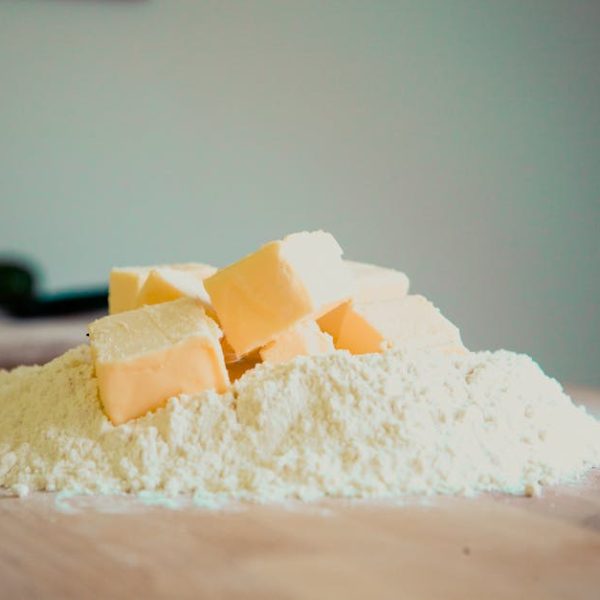Salami, a popular cured meat known globally for its rich, savory taste, can indeed go bad. How soon it spoils depends on several factors including the type of salami, storage conditions, and handling practices. Let’s explore the nuances of salami and the best methods to help you keep your batch tasty for as long as possible.
Understanding Salami and Its Shelf-Life
Salami, originating from Italy, is a generic term for various types of cured sausages made from fermented and air-dried meat. Typically, it’s made from pork, but it can also contain beef, poultry, or a mix of meats. Varieties of salami, like Genoa, Hard, or Cotto, differ in their fats, spices, textures and, ultimately, shelf-lives.
In general, unopened packaged salami can last up to six weeks in the pantry, while refrigeration can extend this up to six months. Once it’s opened, keep it refrigerated and aim to consume it within three weeks. Cooked salami, on the other hand, should be eaten within a week.
Salami’s shelf life is affected by several factors including its ingredients, processing methods, and the conditions in which it’s stored.
Best Practices: To maximize its shelf-life, store salami in a cool, dry place before opening. Once sliced, keep it in an airtight container or wrap in foil in the refrigerator.
Signs of Spoilage in Salami
How do you know when your salami has gone past its peak? Key signs to watch include changes in color, an unpleasant smell, or a slimy texture. Fresh salami typically has a rich red color, so watch for any dulling or development of brown or greenish hues. If your salami has a sour or off smell, or acquires a noticeably slimy coating, it’s likely spoiled.
Consuming spoiled salami can lead to foodborne illnesses, with symptoms such as nausea, vomiting, and abdominal pain.
Pro Tip: When in doubt, throw it out! It’s better to discard questionable salami than risk foodborne illness.
Preserving Salami Quality— Refrigeration and Freezing
Both refrigeration and freezing can help extend your salami’s shelf-life, but each method has its pros and cons. While refrigeration is ideal for short-term storage, freezing can be used for long-term storage but may slightly alter the salami’s texture.
Importantly, how you package your salami for refrigeration or freezing has significant impacts on its freshness.
Checklist: To store salami in the fridge or freezer, follow these steps:
- Keep the salami in its original packaging until you’re ready to eat it.
- Once opened, wrap the salami tightly in foil or plastic wrap before placing it in an airtight container.
- Ideally, store the wrapped salami in the meat drawer of your refrigerator.
- If freezing, slice the salami and separate individual portions with wax paper. This allows for easy future usage while maintaining quality.
Stay tuned for the subsequent sections, where we’ll delve deeper into maintaining salami freshness while serving, and making smart choices when buying and storing salami.
Maintaining Salami Freshness while Serving
One of the key considerations to keeping salami fresh is how you handle and serve it. Proper handling can avoid cross-contamination and preserve freshness. For instance, always wash your hands thoroughly before handling salami and use clean cutting tools and boards to keep bacteria at bay.
The slicing method and kitchen utensils also play a significant role as they can impact the exposed surface of the salami, influencing its oxidation and drying rate.
Comparison:
| Tools/Methods | Pros | Cons |
|---|---|---|
| Sharp Knife | Allows for thin-slice control | Exposes more surface area, affecting freshness |
| Meat Slicer | Eases the slicing process; Professional, even slices | Harder to clean; Higher risk for cross-contamination |
| Slicing as needed | Preserves freshness; Reduces surface exposure | More time-consuming; Inconvenient for large gatherings |
With this information, you can choose the best method based on your needs and the potential freshness trade-offs.
Buying and Storing Salami: Smart Choices for Longer Freshness
When buying salami, assess its quality while also considering your planned usage and storage options. Look for vibrant, even coloration and proper packaging integrity. Whether you choose packaged salami or purchase from the deli counter, pay attention to the ‘sell-by’ dates to ensure maximum freshness.
Just as critical as buying quality salami is storing it properly. Several storage methods can help you keep salami fresher longer, including cellophane wrap, aluminum foil, paper wraps, and vacuum-sealed bags.
Pro’s and Con’s:
| Storage Methods | Pros | Cons |
|---|---|---|
| Cellophane Wrap | Easy to use; Can prevent drying if sealed properly | Not as effective against air and moisture |
| Aluminium Foil | Seals out air when wrapped tightly; Reusable | Can tear easily; Might stick to the meat |
| Paper Wraps | Allows for meat breathing; Restricts air contact | Less moisture-resistant |
| Vacuum-Sealed Bags | Excellent air and moisture resistance; Great for freezer storage | Requires special equipment; Possibility of sealing failure |
One final tip: remember that salami is best when it’s fresh. So, savor it within its optimal freshness period and store it smartly when needed. Now you’re equipped to enjoy flavorful, fresh salami every time!
Key Takeaway:
- Salami is a popular cured sausage that can go bad based on factors including type, storage conditions, and handling.
- Unopened salami can last up to six weeks in the pantry and, if refrigerated, up to six months. Once opened, it should be eaten within three weeks. Cooked salami should be consumed within a week.
- Signs of spoilage include changes in color, unpleasant smell, and a slimy texture. It’s safer to discard questionable salami than risk foodborne illness.
- Proper refrigeration and freezing methods can extend the salami’s shelf life. Appropriate packaging is vital in maintaining freshness.
- Correct handling and serving methods, along with smart buying and storage choices, can effectively maintain salami’s freshness and quality.
You can enjoy your salami without worry by understanding its shelf life, signs of spoilage, and best practices for storage, handling, and serving. Knowledgeable choices when buying and thoughtful storage can ensure that your salami remains fresh, tasty, and safe to eat.
FAQs
Q: Is it okay to eat salami with white mold?
A: Yes, white mold on the outside of salami is usually harmless and even desired in certain types of salami for flavor development. However, if you’re uncomfortable eating it, you can simply remove the mold before consumption.
Q: How do I know if my salami is cooked?
A: Cooked salami has been pre-cooked or smoked before selling, meaning you can eat it straight from the packet. It’s usually labeled as ‘cooked’ and features a less-red, more-brown color compared to raw salami.
Q: Can bacteria grow on salami kept in the refrigerator?
A: Even in the refrigerator, bacteria can grow over time, especially if the salami is stored improperly or too long. Always ensure to store your salami correctly and consume it within the recommended timeframe.
Q: Can I freeze opened but unused salami?
A: Yes, you can freeze opened salami for long-term storage. Ideally, slice it into portions and separate using wax paper before freezing. This will help to maintain the quality and make future use easy.
Q: Can vegetarians eat salami?
A: Traditional salami is made from meat, making it unsuitable for vegetarians. However, there are vegetarian and vegan versions made from plant-based ingredients that mimic the taste and texture of traditional salami.
We hope this article has made you a salami savant! Enjoy your cold cuts and share this article with your fellow salami lovers. Do explore more posts on our website for a wealth of food wisdom!






